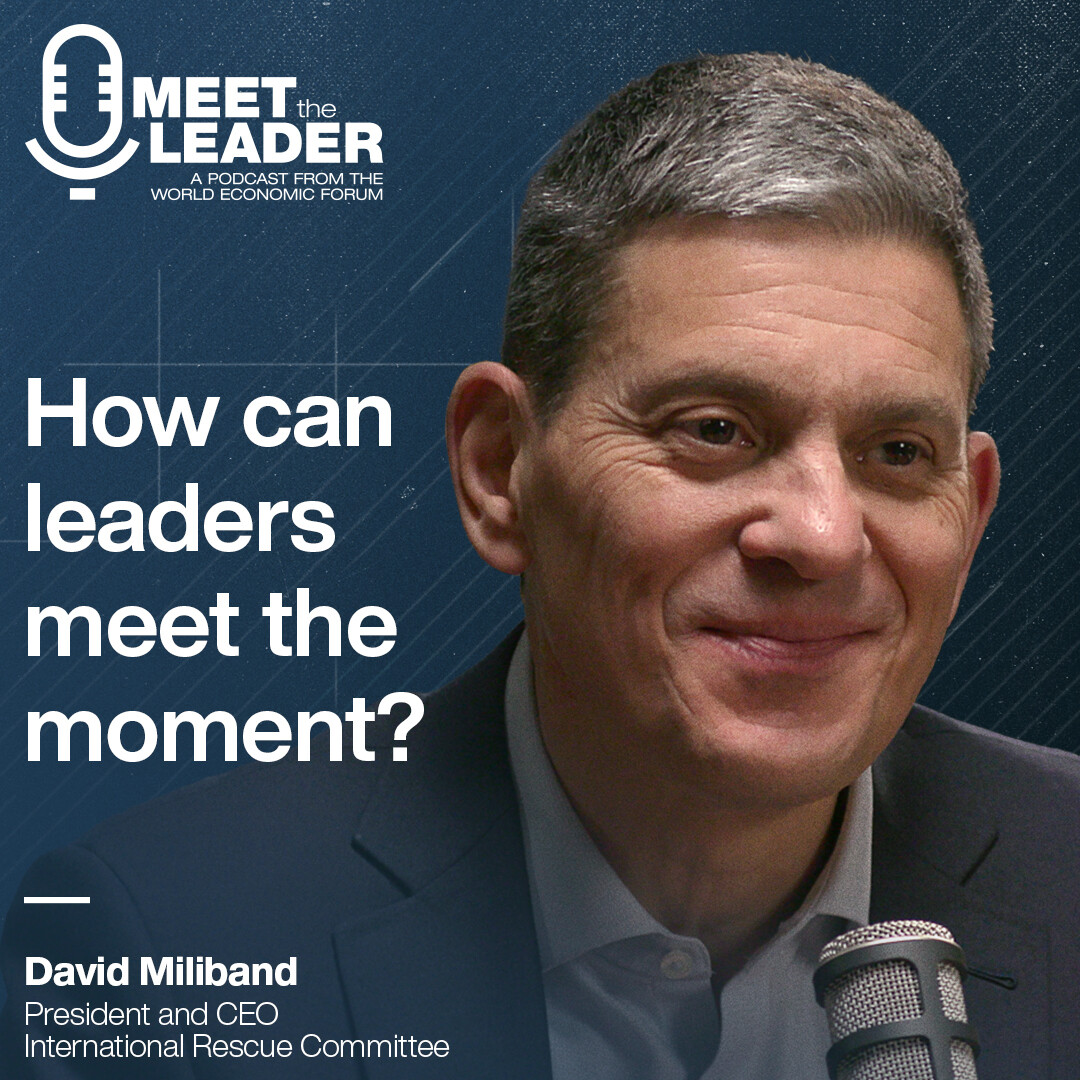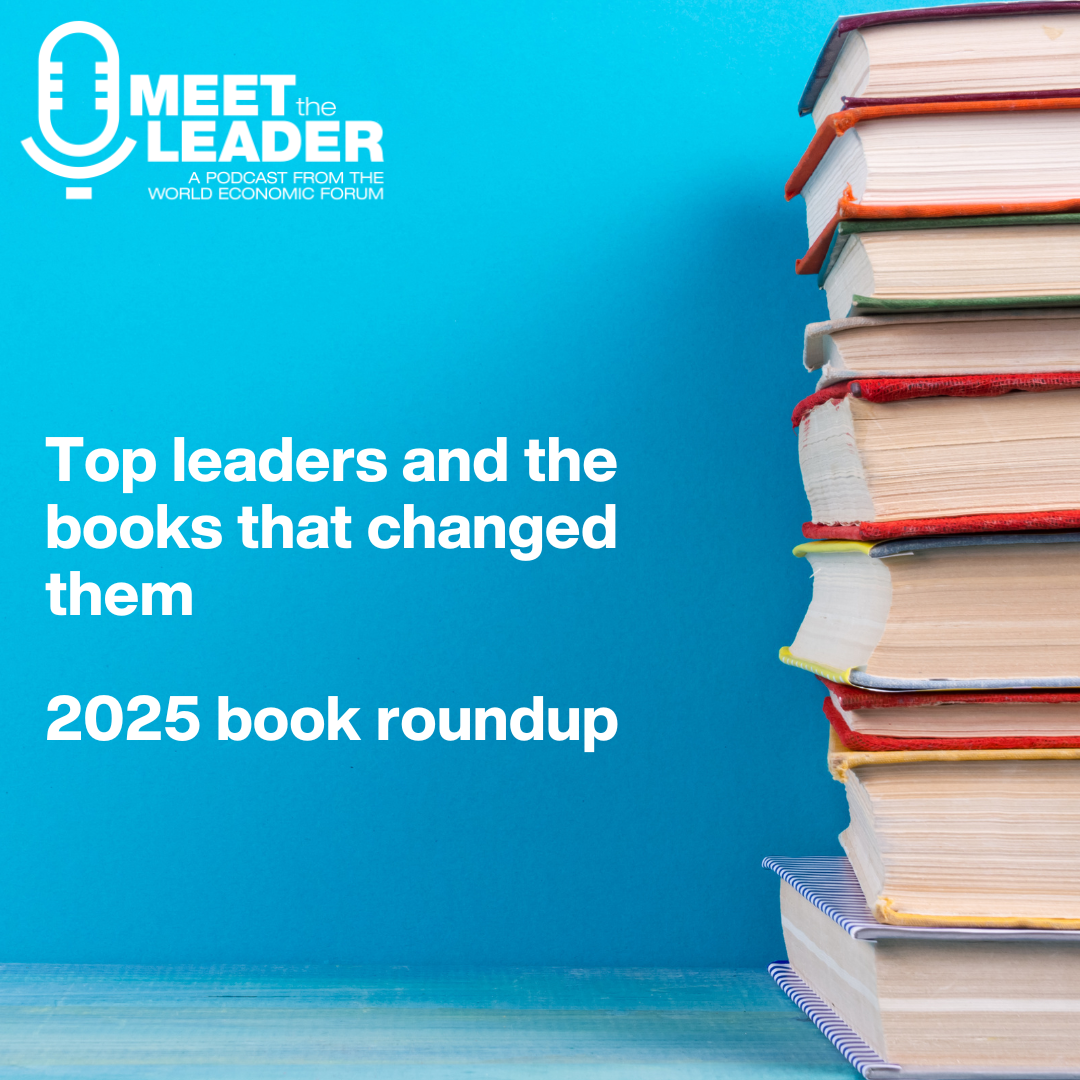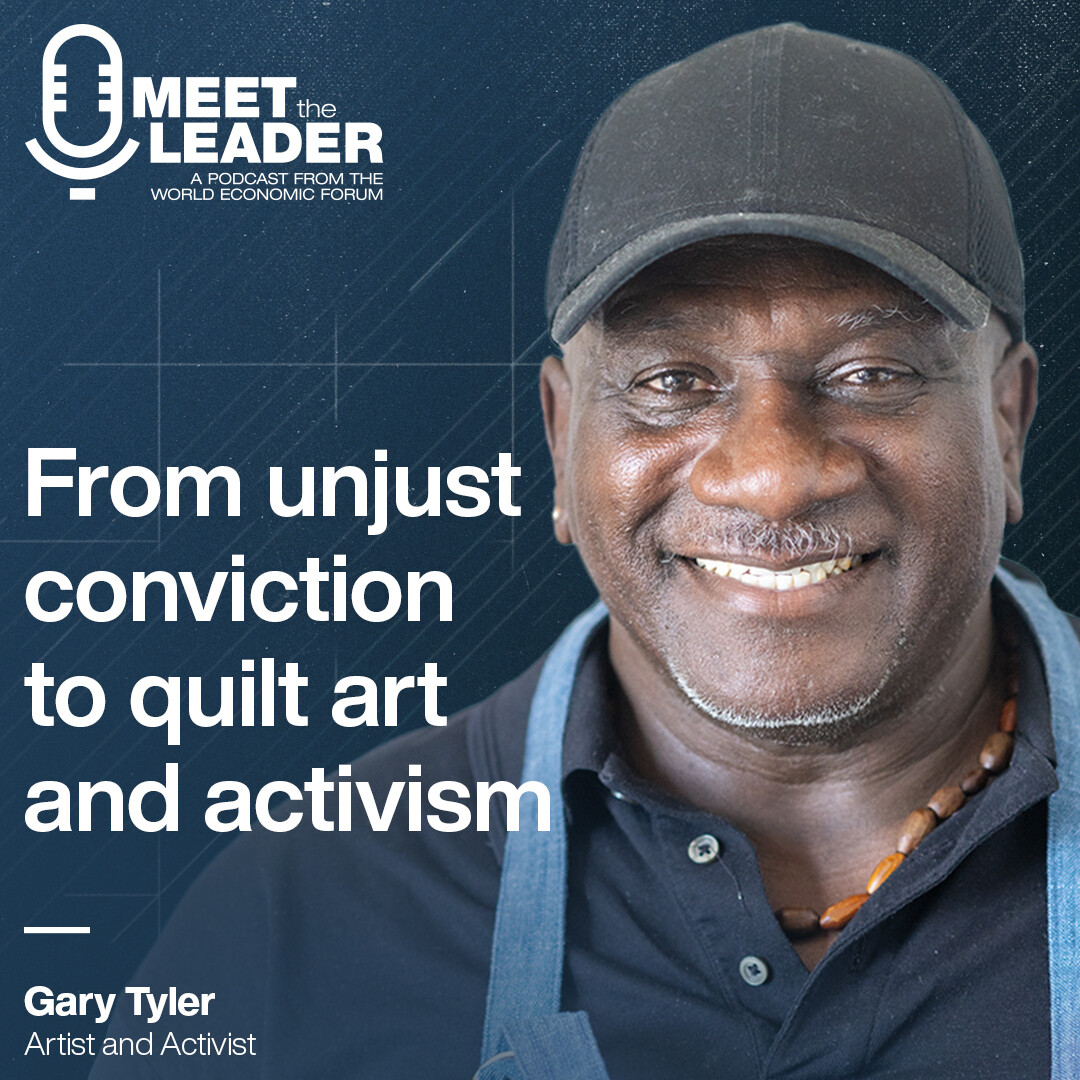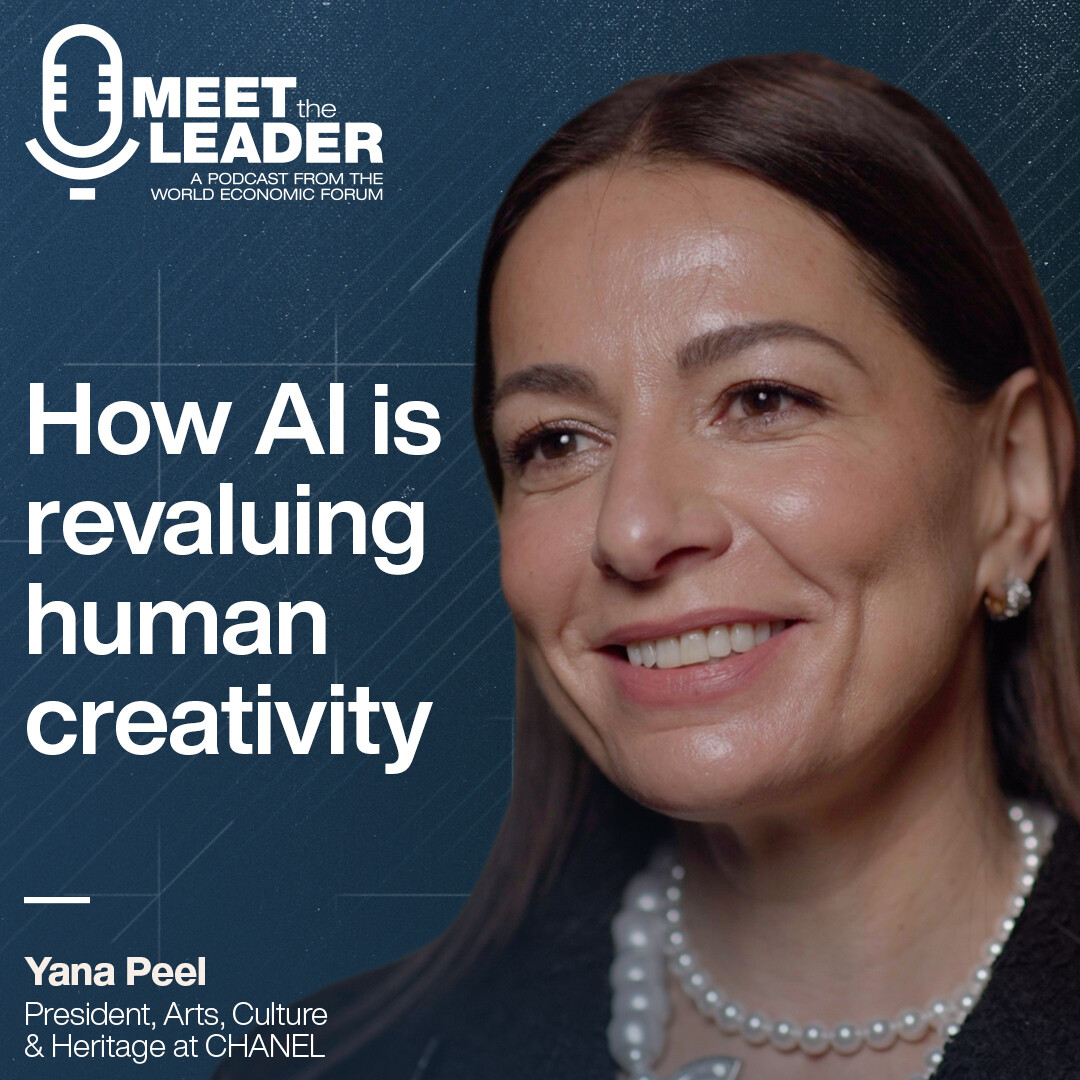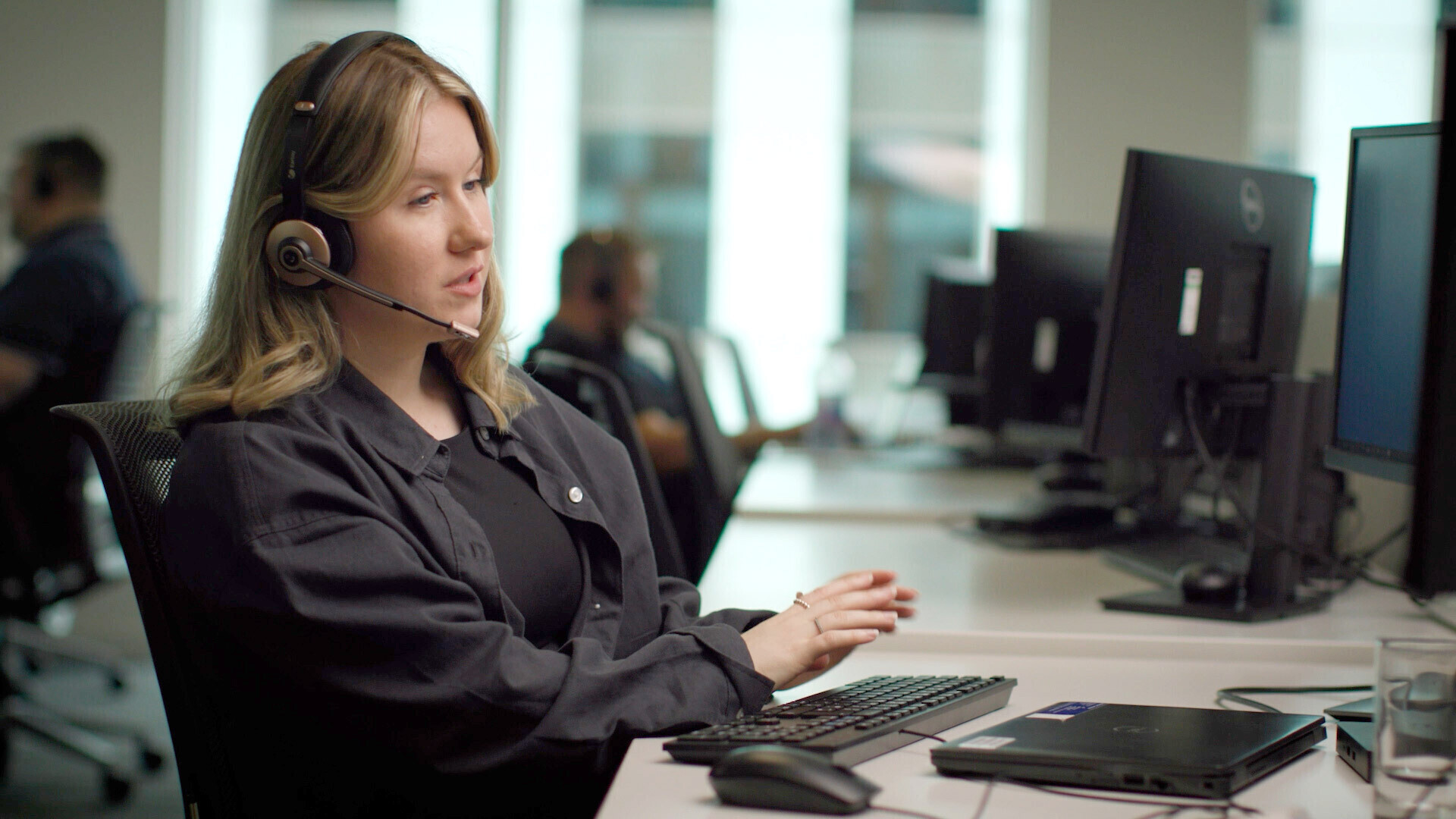Build a culture of innovation: HPE's CTO shares what must be in place
Transcripción del podcast
Linda Lacina, Meet The Leader Welcome to Meet the Leader, a podcast where top leaders share how they're tackling the world's toughest challenges. Today's leader, Fidelma Russo. She is the chief technology officer at Hewlett Packard Enterprise. She'll talk about what innovators really need to push the needle.
Subscribe to Meet the Leader on Apple, Spotify, and wherever you get your favorite podcasts. Don't forget to rate and review us. I'm Linda Lacina from the World Economic Forum and this is Meet the Leader.
Fidelma Russo, HPE How much of your budget to you allocate to experimentation. I would encourage every leader to look and find that money. If you don't find that money and use this to do things that maybe a little bit of a moonshot, then you're not allowing your team to think outside the box enough and you're going to miss an opportunity.
Linda Lacina, Meet The Leader In all of the talk about disruptive technologies, it's easy to forget that there are big minds and real people moving these technologies forward.
Keeping them engaged, motivated and accountable is one of the most interesting leadership opportunities in our current moment. Making the most of these talents doesn't just create a singular solution, it can solve big problems from industry to climate.
Not maximizing that potential at best leads to stasis -- innovations that aren't really that innovative and not really moving anybody's needle. At worst, it can lead to waste of talents and bad problems getting worse and worse over time.
I talked to Fidelma Russo earlier this year. She's the CTO of Hewlett Packard Enterprise, or HPE. She runs a team of 5,500 people all around the world, and the teams she works with run everything from hybrid cloud technologies to futuristic solutions. She talked to me about innovative ways that HPE taps into the creativity and smarts of its team, including an annual tech event that it has run for more than 20 years, one that helps break down silos across the company and helps people approach solutions in new ways.
She also talked to me about the invisible processes that can support innovation, and how that plays out in everything from planning calendars to budgets. She'll talk about all of this, including what she learned during COVID about being vulnerable and how that can shape how any leader solves problems with their team.
But first, she'll talk more about her role at HPE
Fidelma Russo, HPE So I have a dual role. So I am the chief technology officer at Hewlett Packard Enterprise. And then I'm also running the hybrid cloud business unit. And so I have an organization of about 5,500 people all over the world. And in the CTO organization, what I do there is I have the innovation team, and we look at a couple of future ideas. And we work with customers on some of those. And, you know, some of them pan out and some of them don't pan out, some of them turn into products. And then also I have the GreenLake Platform there. And so that services the whole of the company.
And then in the hybrid cloud business unit, that's a profit and loss organization. And there I run the storage team, I have the private cloud team, I have a number of software assets. So they're our container orchestration platform. I have our IT operations platform, I have our backup and recovery software titles, our disaster recovery titles. All of our things that we need for our hybrid cloud organization, as well as responsibility for the go-to-market team.
Linda Lacina, Meet The Leader There's an event called HPE Tech Con. Why don't you tell us a little bit about that?
Fidelma Russo, HPE So HPE tech on it's one of my favorite events. It's been an event run at Hewlett Packard Enterprise for over 20 years, and it's where our engineers come together at the beginning of the year. And so what happens is the CTO office sends out a call for papers on different subjects, subjects that we're interested in that year. Anybody in the company can write a paper and these papers are then sent in. They're reviewed by numerous reviewers across the company. They're short selected down. And this is all volunteers. And so once they're short selected down, a number of them are picked. Of those selected, then we have the event at different places.
So the event last year was held in Miami, and the selectees go to Miami for a number of days. There are poster sessions. There are speakers from outside. There are customers who come. They basically have a big technical conference. It's a little like Davos for, you know, HPE technical innovators to come together and share ideas. So it's a great event. And we had the 20th anniversary last year.
Linda Lacina, Meet The Leader What are some of the kind of the game-changing ideas that have come out of that event.
Fidelma Russo, HPE So a number of great ideas have come out. Liquid cooling. We've been innovators in liquid cooling for a long time, which is really, really important. Now there's in the age of AI with GPUs, which, you know, in the high end training compute infrastructure, you need liquid cooling.
Blade servers came out of it. Innovations around hybrid cloud came from Tech Con a number of other great innovations have come. And we have a wealth of patentable ideas that have also come from the Tech Con events that have gone on over. Of the years.
Linda Lacina, Meet The Leader How important is an event like that to sort of sparking creativity and getting people to kind of truly think out of the box?
Fidelma Russo, HPE The best thing about this event is that what it brings together are people across the company. So when you are in a company like Hewlett Packard Enterprise or many, many companies, you know you tend to work with the same set of people all day long. Even though it's a massive company, a big company with 60,000 people, you really don't end up working with many different people. You end up working with a very small set of people. And so this breaks down those silos and those barriers. So that's really, really important.
And the second thing that we started to do over the last number of years is really open it up and encourage our young engineering talent and our young technical talent. And we're bringing and encouraging them to submit papers. We have nominations to bring our young talent to these events so that they can mingle and get mentorship from talent that's been, you know -- like some like me, who've been around the block a while -- and really kind of get them to get advice, get guidance, share ideas, bounce ideas. And so it's really, really critical to start to form networks and start to, you know, kind of collaborate across the company. And what we find is when people then come back into their organizations, they've got connections. They actually move roles into other parts of the organization, so creates much more of a dynamic organization than if we didn't have events like this.
Linda Lacina, Meet The Leader Are there other things that are kind of key that are really helpful to create that sort of environment of innovation? What supports it?
Fidelma Russo, HPE We have a number of other events that we do. You know, everybody runs hackathons these days. We do that. We have regional Tech Cons now that we've started, you know, we encourage our senior technical talent to go to different regional sites. And so we're continuously trying to come up with ideas on how to really break down these silos.
The other piece that's critically, critically important is to really think about outside in. How do you bring that customer perspective and that field perspective from the outside into the technical talent, into the mindset inside who are designing the products? That is incredibly important these days, and especially as the product cycles get shorter and shorter, you know, we are continuously trying to make sure that our engineers are much more exposed to the use cases that our customers are seeing, that their products get out to the customers, that we co-innovate with customers. And, you know, we are lucky to have customers who really want to do that with us and are willing to allow us to innovate with them and find places where we can, you know, test out together in their sites.
Linda Lacina, Meet The Leader In addition to what you mentioned, are there any prompts or frameworks to sort of help guide people to be thinking outside in? A yearly planning thing that says, hey, how will you integrate X into your product or your business? You know, are there any sort of prompts or triggers or frameworks or practices that are also really helpful?
Fidelma Russo, HPE You mentioned the yearly planning cycles, and I think many of us would probably say, you know, in some ways the yearly planning cycle is a good thing. In some ways, the yearly planning cycle actually is somewhat stifling because technology cycles tend not to run on yearly planning cycles. If we were to care about our budget cycles, then GenAI, I mean, it didn't really go along our planning cycles, and so all of us had to adjust last year and say, what are we going to take out? And so if I took something like GenAI, you know, what we've actually done is to say, okay, wasn't in our budget cycle, was in our planning cycle, but we've adjusted and said in every business unit, what are you doing internally? How are you using it to change your product trajectory? What are you doing that you know, may have been more traditional that you could accelerate, and where is the experimentation that you're doing?
You need to be allocating about 10% of your budget to experimentation. And that seems like a lot. But there's always money in everybody's budget. If you don't find that money and use this to do things that maybe a little bit of a moonshot, then you're not allowing your team to think outside the box enough and you're going to miss an opportunity.
”
The other pieces is, how much of your budget are you allocating to experimentation? And really, you need to be allocating about 10% of your budget to that. And that seems like a lot. But there's always money in everybody's budget that's being spent on kind of what I would call sedimentation, you know, down at the bottom. You know, I would encourage every leader to look and say, you know, how do I find that money? Because if you don't find that money and use it to do things that maybe a little bit of a moonshot or a little bit of, you know, a crazy idea, then you're not allowing your team to think outside the box enough and you're going to miss an opportunity.
Linda Lacina, Meet The Leader There's been so much talk about sort of the tech that's going to be shaping everything. What are people missing? What are they not talking about that you wish got more attention.
Fidelma Russo, HPE So I think in some ways you know we're talking about GenAI, there's such great potential about while we're talking about. The piece that we need to talk about next is when we have this up and running, how are we going to observe it? What's the observability around this? How are we going to observe the energy it's using? How are we going to manage this. And so I think that's the next step here as we start the deployment phase. And we have to think about that now so that we're ready. So that we're not, you know, in two years time thinking about, "oh, we've deployed this now, we've got all of these deployments and we're not observing them." So we have to kind of be thinking about observability now, and getting ready for when we have these deployments out in our IT centres.
Linda Lacina, Meet The Leader And if we don't do that, what happens?
Fidelma Russo, HPE If we don't do that? You know, we'll all be scrambling and, you know, we'll have these energy bills and we'll now be thinking about is the return on investment there. We'll have our CFOs going. We've got these energy bills. And where is my return on investment?
You know, we see this often in technology at the beginning of cycles where we get the backlash of are we seeing the return on investment? And it's because we haven't thought about the problem holistically, and then we end up with stalling. And then of course, we come back and we now think about the problem holistically, and then we see the take off again. So we want to kind of avoid that because the potential is so great. This is another Internet moment. And we want to make sure that, you know, we end up with the promise of this technology benefiting all of us.
Linda Lacina, Meet The Leader AI is going to be driving this next technology cycle. We've seen others historically in the past. What should we be thinking about as we look at these other maybe phases to come? What would you advise people to be keeping in mind?
Fidelma Russo, HPE I mean, I think we've all seen it, you know, if we go back to the Internet wave, which is probably what many of us still remember. At the beginning, there were a couple of companies who were really making a lot of the noise and the money. But in the end, every company was an Internet company and is an internet company. And I think that's what we have to remember.
And then also what we have to remember is when you're thinking about it now, it's really about internal use cases and how can it drive and benefit your business. You know, some of us are thinking about how can we build products that help other businesses, but most of us probably should be thinking about how can it benefit our businesses and how can we drive productivity, and how can we make, you know, our employees lives actually easier?
We have our customer service, and we're looking at using it there and really to speed up case resolution. And that helps us, it helps our customers.
We're looking at it in the engineering ranks. You know, we're experimenting with copilots in co-development across the board, and there are a number of other cases where we're experimenting and kind of measuring, you know, what's a productivity gain. And it's really actually not always about productivity gain. It's around -- is it easier for me to do my job so that I can do other things and think about that next phase in innovations and in development, things that we want to get to market faster.
Linda Lacina, Meet The Leader You have 30 years of experience. How have you changed as a leader in that time?
Fidelma Russo, HPE That's a very good question. If I reflect back, you know, I always remember as I took my first big leadership job, someone saying to me, one day, you know, Fidelma, you come out and you spend a lot of time thinking about, you know, kind of guidance for your team. And what you really need to do is to help your team see how you've thought through that guidance instead of coming out and kind of saying, "Here's what we're going to do."
I always reflect on that advice and kind of iterated over time, because I think it's very good advice. I've tried to follow it. Which is really try to explain how I get to my guidance versus just coming out with, this is what we're going to do. And so I think that's one area where I've changed.
I think the other area and maybe people who work with me will kind of laugh, but I think I've become more patient. And the other one is sometimes you get to an answer. It may not be the way that I would get to the answer, but the team getting to the answer is a much better outcome because the team needs to own the answer. I've learned that that is a much better way than my way.
Linda Lacina, Meet The Leader In technology, It's not all high fives, right? Sometimes you hit walls. Is there time that you hit a wall? You got through it. Tell me about one of those moments and what you learned.
Fidelma Russo, HPE There's a lot of those. I think for me, one of those moments was during COVID and I happened to take a new role just as we were starting COVID, and I had no idea that COVID was going to happen, and I had just resigned and taken a new role. And so in a new company, in a new technology area. And so I was isolated at home. And I'm a very visual person and I like to sit in my conference room with a lot of my team around me, with a lot of whiteboards, with a lot of diagrams.
And so COVID was the, you know, antithesis of that. It was on screen with lots of PowerPoint with no drawings, and you could say they're on slides, but it's not the same thing. And so I found it incredibly difficult to really find my way through, you know, what these people were talking about.
And one day I came downstairs to my husband and I said, I have no idea. This is just a disaster. And what I know is, is that we have to make a directional change, but I have no idea how to even guide the team to it. He said okay. And so the next day I came up to my little office up in the attic, and there were whiteboards and there were everything and lots of markers. And, you know, I took all of the PowerPoints and drew them all out and had a camera, and the team were on the video, and we drew them all and talked it out. And, I had to make myself vulnerable in front of the team to say, I have no idea what you're talking about. So, you know, I need you to kind of guide me through this.
Let's take a step back and try to push: what do we know? What do we not know? How do we get there? What are the options and what are the risks?
”So there are many moments, but I think, I think the lesson out of it is there are so many smart people in technology that you just have to say, either I don't know or we don't have a good answer. So let's take a step back and let's try to push. What do we know? What do we not know? How do we get there? And what are the options and what are the risks?
You know, it's all about risk management. And then if we decide we can't get there, then we have to kind of admit that and not continue to go down the rabbit hole. That's the fatal flaw. If you continue to go down a path where you know you can't get there.
Linda Lacina, Meet The Leader There's not a lot of women leadership in any sector. Tech has also struggled across the board. What is a very tangible thing that leaders can do in organizations to help retain women, so that they can be in leadership positions, they can rise up eventually and have long careers.
Fidelma Russo, HPE If I had the answer to that. I mean, it is pretty baffling. I think about that a lot. You know, when I went into tech, as you said, 30 years ago, there were actually more women, which is really kind of baffling. And as I said, I have a very good support system, and I think that actually is part of the challenge. Many women end up with a lot of home responsibilities. And so I think part of it is making sure that there's enough in the system of work to accommodate women during the times in their lives when they're not at work because they're pregnant, you know? And so you do end up with a number of your years out of kind of the career band. You are gone for a number of years. You know, I was gone for a number of years. And no matter what people say, you are losing a couple of years and actually maybe a critical part of that career ladder. So I think that actually is one piece of it.
I think in the other piece is I think as women in the technical community, we have to help other women. And I think as men, you have to be prepared to take a chance on a woman who may not have all of the experience that the men have and maybe be a little less biased. I think sometimes you just look for perfection, and women bring others things that may not be as obvious, you know, because we're just not the same. We bring other things. We bring good things.
Linda Lacina, Meet The Leader Is there a piece of advice that you've always been grateful for?
Fidelma Russo, HPE You know, I got a piece of advice. I didn't appreciate it at the time, and I am immensely thankful for it. And it is the following, which is: you always bring yourself with you. As I said at the time, I didn't appreciate it. And so sometimes when you are having challenges and difficulties, you really have to look in the mirror and think about, is it you? Is it how you react? And really own that yourself. It kind of clarifies things for you. And I've always appreciated that piece of advice, which I got many, many years ago.
Linda Lacina, Meet The Leader And how has it sort of informed or guided you?
Fidelma Russo, HPE Yeah, I got it when I resigned from my first job. Actually, I got it from a woman. I had the luxury. I worked for a woman VP, which was incredibly rare. When I gave her the reasons I was resigning, she told me this, and I was highly indignant. And I ran into the same challenges a few years later. And then the penny dropped. And then I said, okay, if I have to progress, I better do something about these couple of things. That was kind of how it has informed me. And, you know, you you kind of have these 360 feedbacks, you have these coaches and, you know, they all constantly tell you the same things because you are who you are. And so for me, you know, I know those are my little Achilles heels. And, you know, I work on them every day and try to overcome them. And I know what triggers me. And so it is the most precious piece of advice I've ever gotten. And I think it applies to everybody.
Linda Lacina, Meet The Leader That was Fidelma Russo thanks to her. And thanks so much to you for listening. A transcript of this episode and my colleague's episodes of Radio Davos are available at wef.ch/podcasts.
This episode of Meet the Leader was presented and produced by me with Juan Toran as studio engineer, Jere Johansson and Taz Kelleher as editor and Gareth Nolan driving studio production. That's it for now. I'm Linda Lacina from the World Economic Forum. Have a great day.
Fidelma Russo is the Chief Technology Officer of Hewlett Packard Enterprise running of team of 5,500 innovators driving everything from hybrid cloud technologies to solutions for the future. She brings 30 years of experience as a technologist to the role and shares the tactical strategies that leaders can deploy to support innovation, from tangible ways to invest in experimentation to methods that promote next-level research while breaking down siloes and driving cross-team collaboration.
Alojado por:
Temas:
LiderazgoMás episodios:
La Agenda Semanal
Una actualización semanal de los temas más importantes de la agenda global
Más sobre LiderazgoVer todo
Sebastian Buckup and Maximilian Martin
2 de diciembre de 2025

